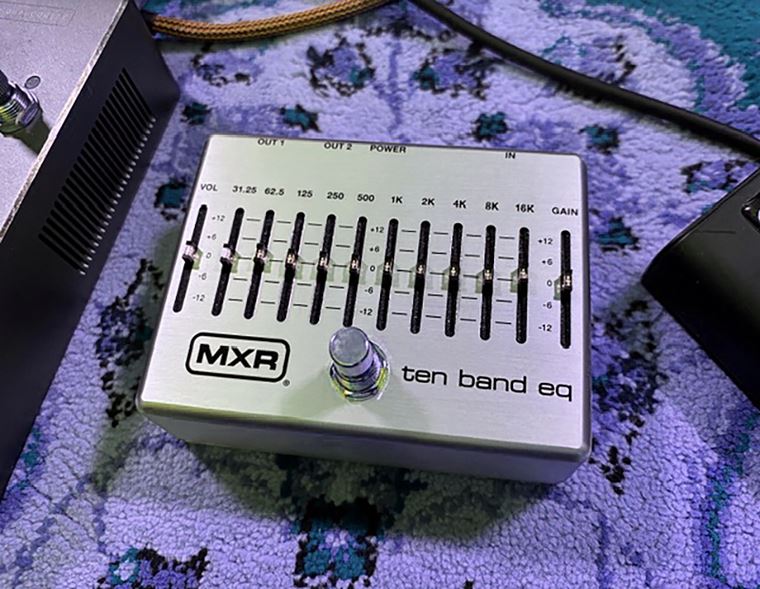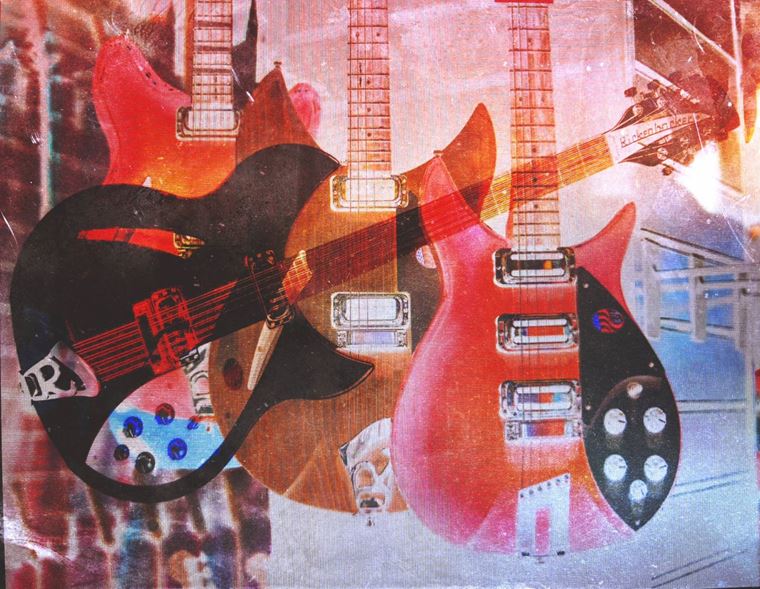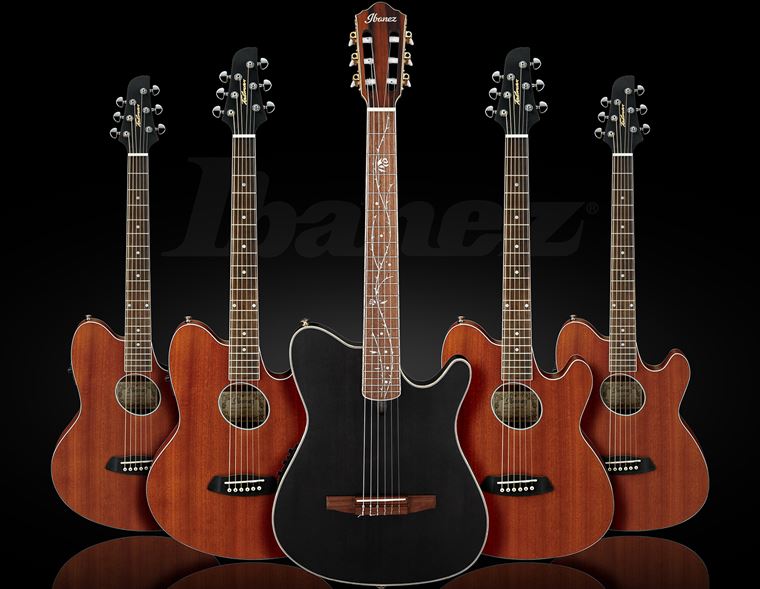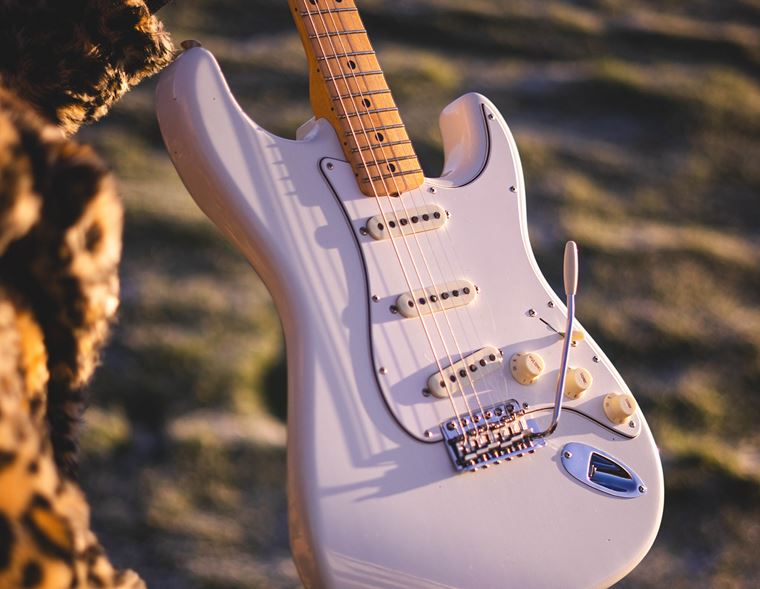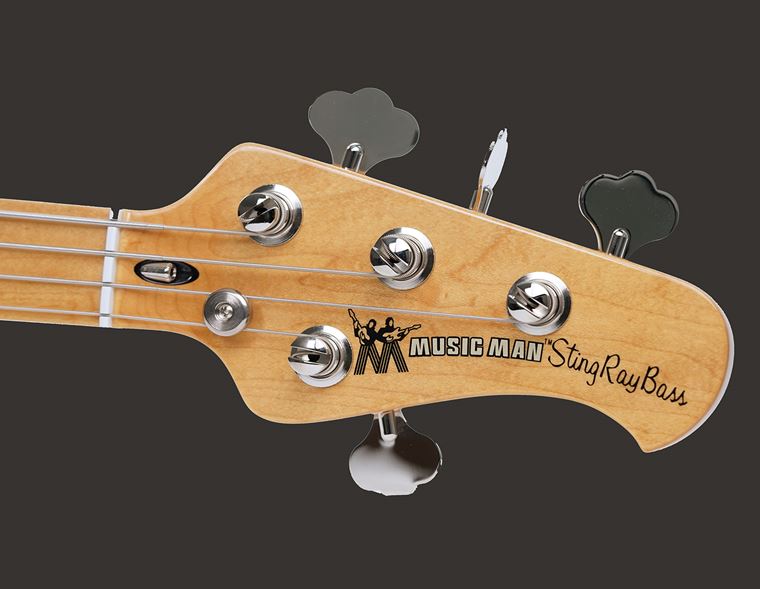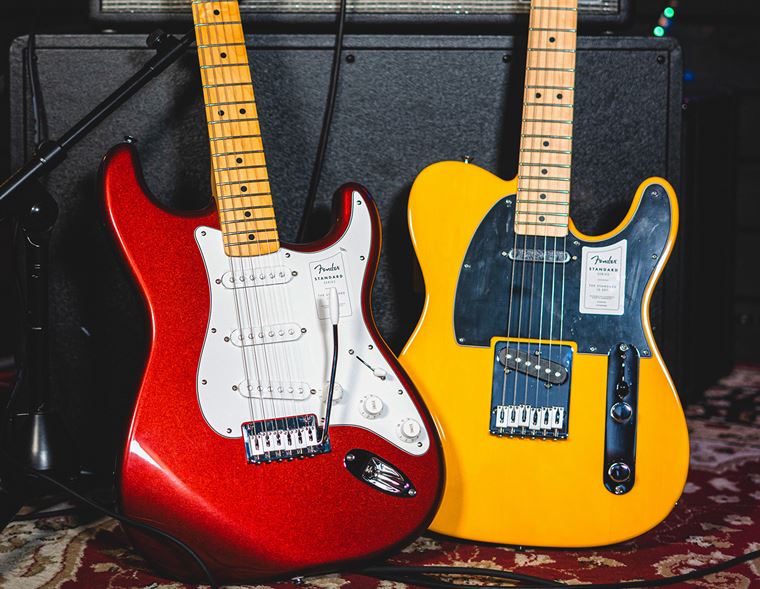Greatest Horror Soundtracks: Top 15 Scarily Good Scores
Published on 20 October 2022
Tis the season for scares! The leaves are turning gold and falling to the gutters, the nights are drawing ever darker, and the cold westerly winds chill the bones as we wrap up and head home under the lantern light of an incoming Halloween. Yes, friends and fiends, it’s Spooky October once again!
This month, we’ll all be (probably) watching more horror movies at home, so we thought we’d have some fun with you by bringing together our favourite scary movie soundtracks!
Music plays a massive part in how we experience films, and as music fans, we are all more sensitive to it than usual. So, let’s turn our critical ears towards the graveyard/dark corridor/asylum/gloomy forest and enjoy these selections of the greatest horror movie soundtracks ever!
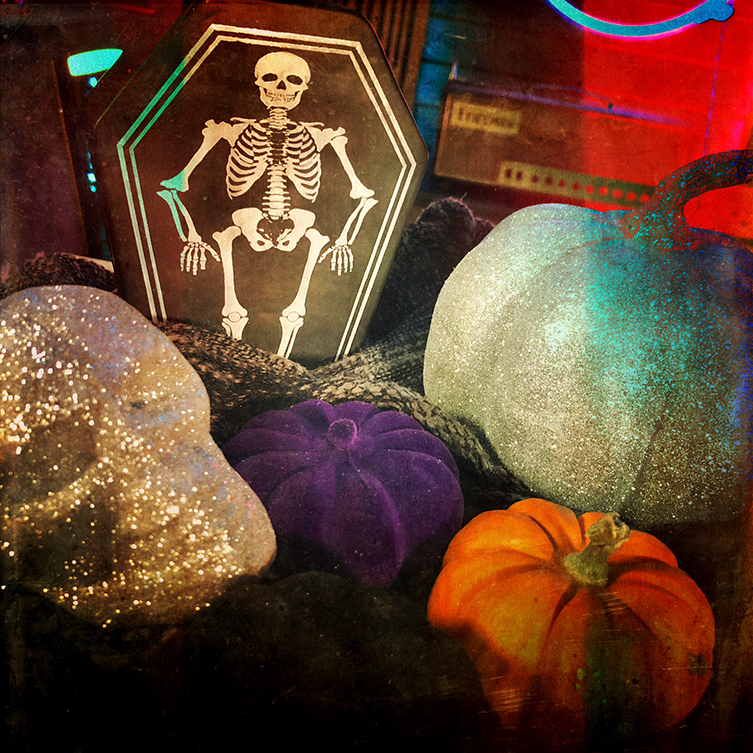
Psycho
It’s an obvious one, but even after 62 years, Bernard Hermann’s score to Psycho stands up brilliantly. It’s a real paragon of the genre, with those screeching violins defining forevermore the sound of sheer, invasive terror. That said, we always feel like the music in the infamous ‘shower scene’ actually draws attention away from the rest of the score, which is a real masterpiece of using music to build up character. Much of how we feel about Norman Bates (prior to him going ‘full loco’) is determined by the weaving, undulating minor key score that follows his scenes.
Deliberately stylised, even for 1960, Psycho remains a tour de force in mounting horror.
The Shining
Stephen King, who wrote the source novel of The Shining, famously disliked Stanley Kubrick’s movie adaptation from 1980. Everybody else politely disagreed, seeing it instead as one of the most effectively scary movies ever.
Right at the beginning, the score decides, in no uncertain terms, to highlight the impending horror. As was often the case with Kubrick, he both hired composers to create a score (Wendy Carlos and Rachel Elkind this time) and also chose pre-existing music to highlight certain sections. The most famous piece of music - heard right at the beginning of the movie and then repeatedly throughout - is a bit of both. The deathly, ominous tones of the synths are indeed performed by Carlos and Elkind, but the notes are taken from Dies Irae (Day of Wrath), a 13th Century Latin hymn about God’s final judgement on both believers and non-believers. Very suitable for a movie about mortality, consequences, and forces of evil.
The Omen
The Omen is one of those movies that always manages to be slightly creepier than you remember, no matter how often you’ve seen it. Telling the story of the birth of the Antichrist, Richard Donner’s 1976 horror has a uniquely powerful, unnerving atmosphere that builds with each successively diabolical revelation in the storyline.
Film score veteran Jerry Goldsmith didn’t hold back when composing the score, either. Satanic sounding (we presume, since what does ‘Satanic’ actually sound like?) choirs deliver the full gamut from excitable whispers to full-on shrieking frenzies, whilst the strings that accompany them sound like dread has somehow been poured onto the fingerboards of the instruments. Though slightly spoiled by South Park’s parody (try not to hear the chant of ‘cheesy poofs’ when you listen to this music after seeing Satan cavorting with Saddam Hussein), this is one of those soundtracks where ‘going big’ was most certainly the right idea.
Bram Stoker’s Dracula
Talking about going big, the score to Francis Ford Coppola’s superlative 1992 movie Bram Stoker’s Dracula is as gloriously over the top as it gets. Written by Polish composer Wojciech Kilar, the score is alternately as romantic as Romeo & Juliet and as subtle as a river of blood.
Kilar was given free reign from Coppola, who told him simply: “Listen, I’m the director, I made the film. You’re a composer, you’ve seen the film. Do what you want. If you’ve got a respectable good composer, then you have to give him freedom, and a smart director understands this.” Kilar repaid this trust given him by making a score that’s so iconic, you’ll have almost definitely heard its strident, baroque power in all sorts of contexts outside the film. It has been heavily used in movie trailers and adverts, but nowhere is it as effective as in it’s original home, right in the centre of this gleefully demented movie.
Halloween (and The Thing, and the Fog…)
John Carpenter is certainly known as one of the world’s great horror film directors, but right behind that accolade is his reputation as one of the world’s great horror film composers.
Deciding early on to use himself as soundtrack composer (because he was “cheaper and would show up on time”), Carpenter went on to pretty much define what synth-led horror scores have sounded like ever since.
We’ve picked Halloween as the main focus here, partly because it was his first horror score, and also because it has endured: a new Halloween movie is literally in the cinema as we type! For the main Halloween theme, Carpenter used the somewhat unusual 5/4 time signature in order to throw audiences’ ears a little. His descending theme is certainly an appropriate approximation of the damaged mind of antagonist Michael Myers, and no amount of shoddy sequels/remakes can remove the dark power of the theme tune.
Carpenter followed Halloween with another creepy horror classic, The Fog, which featured a spooky maritime variation on Halloween’s piano riff. As if that wasn’t enough, he came back two years later with The Thing, an inestimable classic of the genre. For this, he collaborated with legendary composer Ennio Morricone for a particularly paranoid, downbeat score that is note-perfect for the film.
Not a bad run of work there, John!
The Wicker Man
Context is everything. For example, you might have some excellent new trainers but they’d probably look terrible if you wore them to your wedding! Context can also be used to provoke certain emotions and feelings by juxtaposing moods that are opposite, and horror is a great genre for this to occur in.
Take folk-horror masterpiece The Wicker Man. The whole movie is a slow-burning tale of terror, based ostensibly on a mising child case on a remote Scottish island. Here’s where our rambling about context comes into play. Instead of using the typical horror soundtrack tropes of stabbing violins and low drones, we instead hear folky acoustic instruments and traditional songs, music that would otherwise be the least scary kind imaginable. In the context of the film’s narrative, however, the folksiness takes on a most sinister aspect, not to mention an increasingly claustrophobic tone. In suggesting this one single difference in culture, the use of music is in fact implying that the islanders do everything differently, whilst leaving out specific details until the denouement.
An American Werewolf in London
Carrying on the subject of context, never has juxtaposition been so effectively (or wittily) used as in the wolf transformation scene in An American Werewolf in London. It’s perhaps somewhat on the nose (snout?), but we love the use of Bobby Vinton's rendition of Blue Moon whilst our protagonist endures his first terrifying and painful change from man to monster. As American as McDonalds and Budweiser, the use of Blue Moon here underscores the fish-out-of-water narrative, adding a weird sense of loneliness to our hero’s unfortunate problem.
Aside from this, the rest of the score hints at the tragedy of the tale (tail? sorry) and is used to replace that inherently menacing tone that the movie’s moments of levity attempt to undermine. Yes, it’s occasionally funny, but we are never under the impression that the story is anything but horrific. Perhaps the most extreme of horrors requires those occasional lifts of comedy?
Jaws
It’s the most famous horror soundtrack in the world, except perhaps for Psycho. Both are actually quite complex bodies of music, but the world is most acquainted with the simplest, most direct moments from each. We are, of course, talking about Steven Speilberg’s epic shark horror, Jaws.
Those two see-sawing tuba notes (the notes themselves are a very guitar-friendly E to F) have become such a cliche over the years, but cliches only ever occur when the thing in question is pretty excellent, and so it is here! The score itself is actually full of motifs, themes and melodies, but nothing is as directly efficient as those two ‘shark’ notes. For a composer who has done more than any other single person to define what movies sound like (he’s responsible for Star Wars, Indiana Jones, ET, Harry Potter, Superman and hundreds more), John Williams’ decision to go with two notes for Jaws was a monumentally insightful one indeed.
Silence of the Lambs
Remarkably, there are some people out there who think that 1991’s Silence of the Lambs is not a horror movie. A film about a psychopath cannibal and a maniac who abducts women, throws them down a big pit in his living room and eventually skins them? Sounds pretty ‘horror’ to us, as does Howard ‘Lord of the Rings’ Shore’s accompanying score. Using the ever-mounting dread of the narrative as his inspiration, Shore uses dense, low timbres to infect every scene of the movie. The soundtrack’s most powerful property is perhaps how subtle it often is: you may not be able to whistle it as you would the Jaws or Psycho themes, but take the music away from the pictures and you’ll see just how inseparable it really is. The mark of a master? We’d say so.
The Exorcist
Again, it’s something of a cliche to include The Exorcist in a list such as this, but the reason for that is because the music is just so effective. Going back to the film, it’s interesting to note just how little music is used throughout. Indeed, the famous Tubular Bells intro (it’s more piano than anything else, but still) only appears at relatively incongruous points in the narrative - leaves blowing doing a windy Chicago street, for example - but in terms of evoking a sense of elemental, occult evil, it’s enormously effective.
Mike Oldfield’s Tubular Bells record remains a singular experience, and indeed one quite removed from any association to the film. Away from that particular piece, the Exorcist has a score that revels in prime malevolence, especially in those early scenes set in Iraq. It’s easy to forget about these parts of the movie compared with the spinning heads and pea green puke that follows.
Much like Jaws, certain special FX in The Exorcist have long since shown their age, but the films themselves still retain their ability to frighten to the core.
Atlantics
It’s not all classic horror here, nor is it all about jump scares and excessive violence. Horror comes in many forms, and this recent movie from Senegal is as powerful as any of those, whilst utilising restraint and suggestion. Certainly, Atlantics - a movie about the young men who routinely drown at sea whilst looking for work in foreign countries, and the young women awaiting them - is a ghost story, though it’s far from traditional. These ghosts live in the blistering sun of Dakar, in dust-strewn streets and dark seaside nightclubs.
Correspondingly, the score by Fatima Al Qiri is an etheric, melancholic tapestry of synthesiser textures that reflect the sad, anonymous horror of the story perfectly. Exotic and threatening in equal measure, it weaves a spell at least as effectively as the images.
Bonus Content: Greatest Horror Soundtracks from Movies that Aren’t Horror Movies
Occasionally, a film will show up with a superb, exciting, scary soundtrack, but that film isn’t even a horror movie! And we’re not referring to that endless debate about whether Alien is a horror film or not (it clearly is), but films that belong in a different genre altogether. These last three choices are all great non-horror flicks with overwhelmingly horrific soundtracks.
Excalibur
John Boorman’s bonkers 1981 tale of King Arthur is crazier than a box of mediaeval frogs, but it’s one of the better (non-Monty Python) Arthurian movies out there. ‘Eccentric’ is not a word you can often use in mainstream movies, but Excalibur is full of cackling wizards, shiny armour, neon special effects and a cast who appear to be collectively competing to see who can chew up the most scenery..
In short, it’s ace, and Boorman created a legitimately iconic image with the ‘rose petals’ scene: King Arthur, charging on his horse, with rose petals blowing around him and Carl Orff’s none-more-satanic sounding O Fortuna chorus chanting in the background. Again, it’s a piece of music you’d now find on something dull like The Apprentice with Alan Sugar, but back in the 80s, this was inventive, mind-blowing stuff.
Inception
Did you get lost within Leo DiCaprio’s dream within a dream? We think we did, but we can’t really tell if we’ve woken up yet or not! Such is the effect of Christopher Nolan’s 2010 masterpiece, with its talk of dreams collapsing and hijacking of thoughts.
Heady stuff indeed, and Nolan clearly picked the correct sparring partner when he got uber-composer Hans Zimmer to sign on for scoring duties. The last half hour of Inception is all Zimmer’s as his thrillingly bombastic score steps up and more or less takes over from the dialogue for the rest of the movie. Whilst the film is about people in fancy suits invading people’s dreams, this music could just as easily score some sort of monumental cosmic horror or Lovecraftian terror.
As we’ve seen today with the likes of Psycho and Jaws, good ideas often become cliches, and that’s also the case here: Zimmer’s enormous ostinato chords of Inception’s stand-out moments have been perhaps the most overused sounds of the last decade. Still, it’s a sound worth stealing!
Eyes Wide Shut
Our second entry from Stanley Kubrick is his highly mysterious final movie, Eyes Wide Shut. Is this film a detailed look at relationships and fidelity? Is it a whistle-blow about the goings on of rich elites behind closed doors? It seems to be both, particularly in the infamous ‘masked ball’ scene. It’s a controversial scene for sure, but the music is subversive in its own way.
Masked Ball by Jocelyn Pook actually existed prior to the movie, and Kubrick instantly wanted it when he came across the piece. Central to the music is a diabolic backwards rendering of a latin mass, reversed and therefore subverting (undermining?) its sacred meaning. The portentous music that accompanies it plays forwards, making the monk’s vocal - and that of his higher-pitched counterpoint monk co-vocalist - sound entirely otherworldly, not to mention astoundingly evil.
Music Makes Horror Scarier
Well, those are our choices for the scariest sounding, most terrifying horror soundtracks. There is always room for more, of course, and so we tried to make a good cross section of obvious classics and less well-known contenders in our rundown today. There’s scope here to extend into video games and TV shows, but we’ll maybe keep those for next Halloween! In the meantime, we hope you’ve enjoyed this spooky list. Have a spooktacular October!


